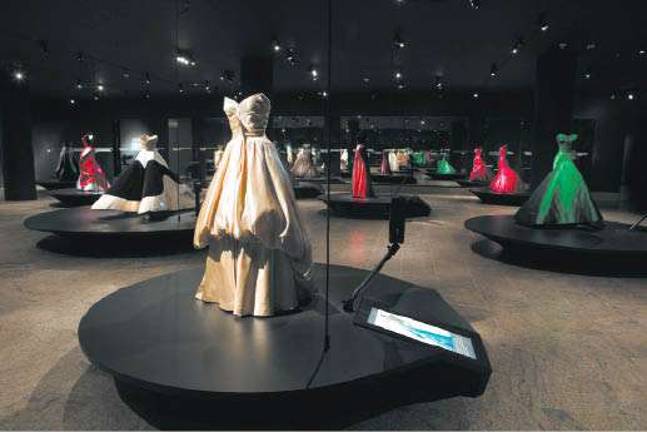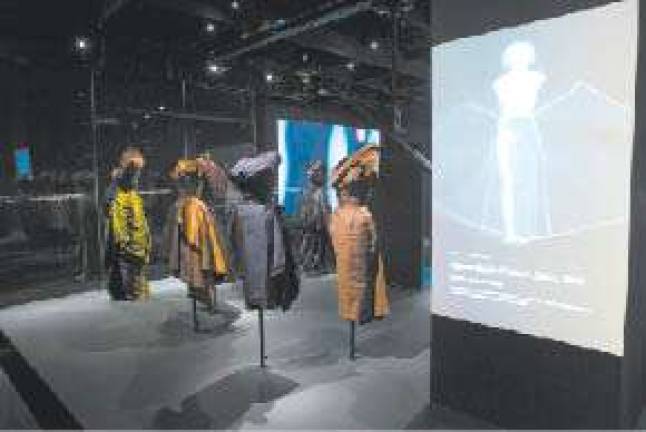Sartorial Splendor


Exploring the Charles James: Beyond Fashion exhibit at the Metropolitan Museum of Art
It can take a bit of magic, when something has vanished, to make it reappear. The Metropolitan Museum's Harold Koda, chief curator at the Costume Institute, and co-curator Jan Glier Reeder, have applied some technical wizardry and great showmanship to bring the work of America's first couturier back into the light in Charles James: Beyond Fashion.
James, considered by those in the fashion industry as among the greatest of the greats, was a genius who approached design unlike anyone before him or since, but like many visionary artists, he died penniless and forgotten.
"He's like a sexy treasure for a curator, because most people don't know who he is, yet he has such a rich body of work, you're able to present the public with a surprise," said Koda.
The elegant, opulent satin and tulle gowns on view at the Met will almost certainly surprise. And some of the more quotidian dresses and coats show even more clearly the unprecedented originality of Charles James's vision. Oddly shaped panels, cut in winding patterns, wrap, flutter and hang in ways that might make other dressmakers gasp.
Charles James: Beyond Fashion is presented in two separate locations in the museum. The gowns, in hues of emerald, ruby, and pearly white and in shapes that evoke trees, swans and butterflies, are on view in the museum's special exhibition gallery on the first floor. Low pedestals in a darkened room spotlight these creations without glass cases. The curators wanted to allow a sense of intimacy in viewing the dresses. They're displayed only slightly higher than floor level, making it easy to imagine the swish and sway and sensation that wearing one would bring. You can walk around each piece, seeing the back and the front, and, in certain cases, even what lies beneath.
At one time, he was the most sought after designer in the country, dressing socialites and stars. His clients ranged from members of the wealthiest families-Hearst and Vanderbilt Whitney-to fellow artists (Lee Krasner bought a dress for an opening) to Gypsy Rose Lee. But, in the end, he was too exacting, too creative and too unwilling to compromise to ever achieve commercial success.
The women who wore his creations often found them challenging, noting that it could be hard to tell the front from the back. They could also be rewarding, as when Matisse asked one of his portrait subjects to wear her Charles James blouse for a sitting, or liberating, as seen in one of James's most notable creations, the Taxi Dress, which was designed to be so simple, one could put it on in the back seat of a taxi. A puffy down coat might intimidate today's clients as looking too futuristic. It was made in 1937.
James's own favorite was the Four Leaf Clover dress, a white satin and black velvet marvel of modern design, the skirt of which looks like a four-roomed tent. Many of his dresses evoke forms of nature, like tulips turned upside down or the graceful arcs of folded-under feathers of swans. James was the only American fashion designer ever to receive a Guggenheim Foundation Grant. The Metropolitan chose to exhibit his work partly because, curator Koda explained, James "never felt that he was a commercial fashion designer. He felt that he was an artist whose mode of expression was fashion. So that's a perfect pairing for us-art museum, but fashion, with a fashion designer who thought he was an artist."
An artist, indeed. Charles James: Beyond Fashion, which runs through August 10th, presents approximately 70 designs by an American master in an incredible display of clothing that transcends functionality and truly belongs on pedestals in a museum.